-
All Topics
-
People in History
-
Immigration and links with other countries
- Irish migration to North East England
-
Immigration and links with other countries
-
People in History
Irish migration to North East England
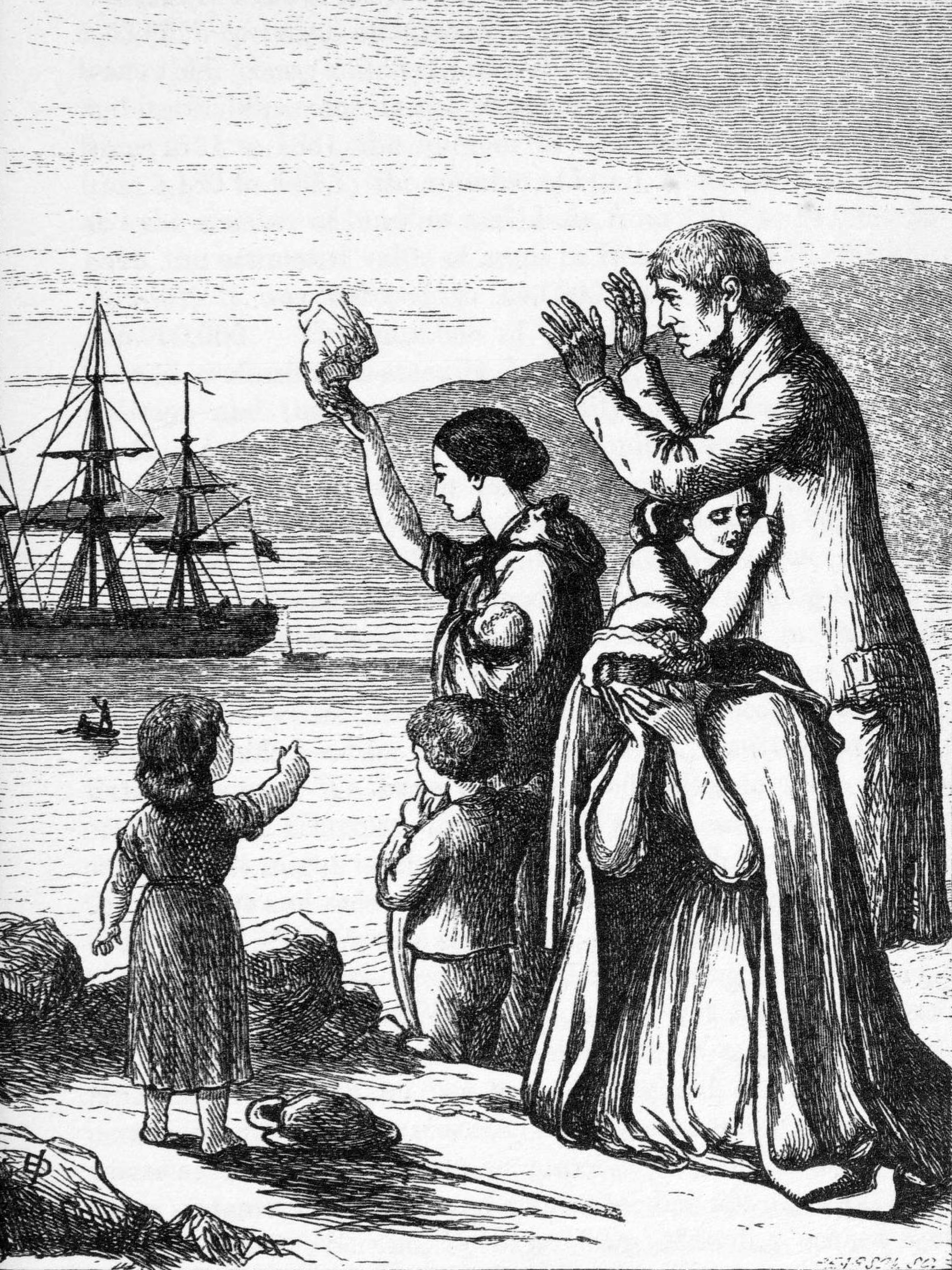 Irish people came to England for job opportunities associated with the industrial revolution, particularly with the beginning of the 'railway age' in the 1830's. Irish migration accelerated after 1846 with the economic depressions and famine in Ireland, whilst in England the 1850s and 1860s were a period of economic boom and employment opportunities. As well as work building railways many Irish people found work in the iron and steel industry in Middlesbrough and ship building in Jarrow, Hebburn, Howdon, Wallsend and other places in the North East. Similarly, the 1950's and 1960's saw further waves of migration during economic depression in Ireland. Many people came for work in road building and other major construction projects, such as the building of the Tyne Tunnel and later the building of the Metro system. In the 2010's there has been further, smaller scale, migration from Ireland to the North East, with the 2011 census indicating many are professional people, including academics, medical staff, lawyers, pharmacists etc.
Irish people came to England for job opportunities associated with the industrial revolution, particularly with the beginning of the 'railway age' in the 1830's. Irish migration accelerated after 1846 with the economic depressions and famine in Ireland, whilst in England the 1850s and 1860s were a period of economic boom and employment opportunities. As well as work building railways many Irish people found work in the iron and steel industry in Middlesbrough and ship building in Jarrow, Hebburn, Howdon, Wallsend and other places in the North East. Similarly, the 1950's and 1960's saw further waves of migration during economic depression in Ireland. Many people came for work in road building and other major construction projects, such as the building of the Tyne Tunnel and later the building of the Metro system. In the 2010's there has been further, smaller scale, migration from Ireland to the North East, with the 2011 census indicating many are professional people, including academics, medical staff, lawyers, pharmacists etc.
Case studies:
Middlesbrough
"Middlesbrough during the latter half of the 19th century had the second highest percentage of Irish born migrants in England after Liverpool. In terms of the overall population, 9.2% of Middlesbrough's inhabitants were Irish born in the 1871 census During the late 19th century, Middlesbrough became a world leader in the Steel and Iron industry and with the rapid growth of the town, the expanse of newly opened blast furnaces attracted many workers and their families to the Middlesbrough area. Unlike many other British towns at the time, Middlesbrough showed no signs of sectarianism or segregation within the various communities that lived alongside each other, there were no "Irish quarters" and the many Irish that settled in Middlesbrough integrated into their adopted home. This was most likely as a result of the town's infancy, it was essentially a migrant town. Although the number of Irish born currently residing in Middlesbrough may not be as substantial as it once was, Middlesbrough retains a strong Irish connection and heritage through the ancestry of many residents." (Wikipeda, accessed 18/02/16 - see references in the article).
Gateshead
"By the mid-nineteenth century, the north east of England was home to the fourth largest Irish settlement in England. The 1851 census makes it possible to identify key features of this post-famine community and provides a basis for the exploration of non-quantitative sources. The Gateshead Irish community was the third largest in the north east, behind Newcastle and Sunderland." Source: Neal F. A Statistical Profile of the Irish Community in Gateshead – The Evidence of the 1851 Census. IMMIGRANTS & MINORITIES 27(1):50-81, 2009.
1871 census - 6.8% of the population of Gateshead were Irish born. At that time, the Irish community were concentrated around Bottle Bank in Gateshead.
Port Clarence (Stockton)
Port Clarence in the borough of Stockton-on-Tees has a strong history of immigration from Ireland. Many travellers settled in the village between 1900 to 1920, particularly from counties Tyrone, Monaghan and Wicklow. They arrived to work at the port and in the local steel and chemical industries.
Cowpen (Blyth)
Catholic Mass was provided by a French priest Cowpen Hall after the Sidney Family came to live there in 1804. Later Mass moved to Cowpen Grove House, but this became too small due the growth of the Catholic community associated with the influx of Irish immigrants who came to work at the Bedlington Iron Works. Marlow J Sidney converted an old cow byre to be used as the first church at Cowpen and this became part of a wider Benedictine mission established in 1836.[1] The church, now the RC Church of St Cuthbert was remodelled by John Dobson in 1840.
The Irish in Britain, 1815-1939
Book: The Irish in Britain, 1815-1939. Roger Swift, Sheridan Gilley. Rowman & Littlefield, 1989.
Partial preview of book via Google Books:
An estimated 6 million people living in the UK have an Irish-born grandparent (around 10% of the UK population); Guardian,13th Sept, 2006.

from http://www.chroniclelive.co.u…
How the Irish helped build the North East - and where they set up the first ever Irish Club
- Article by Mike Kelly, Chronicle Live, 4th March 2015
Added by
Simon Cotterill
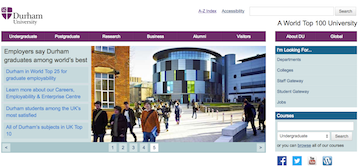
from http://etheses.dur.ac.uk/1907…
The Irish in County Durham and Newcastle c.1840-1880.
- PhD thesis by Roger Cooter. Reference: Cooter, Roger. The Irish in County Durham and Newcastle c.1840-1880. Doctoral thesis, Durham University. http://etheses.dur.ac.uk/1907/
Added by
Simon Cotterill

from http://etheses.dur.ac.uk/1710/
The Irish on Tyneside : migration and identity
- PhD thesis: Puddu, Franca (1997) The Irish on Tyneside : migration and identity. Doctoral thesis, Durham University. http://etheses.dur.ac.uk/1710/
Added by
Simon Cotterill

from http://freepages.genealogy.ro…
Irish Migration 19th Century. Newcastle and Weetslade.
- "This essay aims to look at the Irish in the Nineteenth century with reference to King (1994). and Thompson (1991) who wrote ‘There was a great deal of inter-marriage. And …
Added by
Simon Cotterill
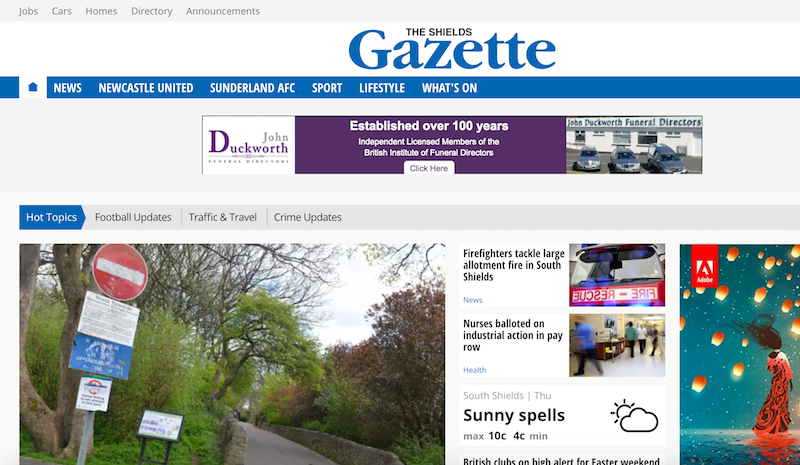
from http://www.shieldsgazette.com…
The Irish community's impact on South Tyneside
- Shields Gazette, 29th February 2008
Added by
Simon Cotterill

from http://www.shieldsgazette.com…
Irish roots run deep in South Tyneside
- Article by Janis Blower, Shields Gazette, 16th March 2012
Added by
Simon Cotterill

from https://commons.wikimedia.org…
Emigrants Leave Ireland, by Henry Doyle, 1868
- Illustration from Preface to the First Edition of An Illustrated History of Ireland from AD 400 to 1800, by Mary Frances Cusack, Illustrated by Henry Doyle
Added by
Simon Cotterill

from https://en.wikipedia.org/wiki…
Irish diaspora
- "The Irish diaspora (Irish: Diaspóra na nGael) refers to Irish people and their descendants who live outside Ireland.
Since 1700 between 9 and 10 million people born in Ireland have …
Added by
Simon Cotterill
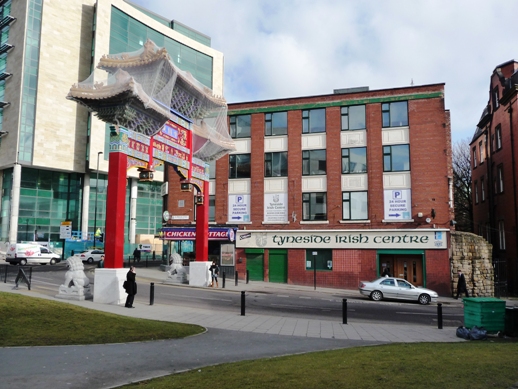
Co-Curate Page
Tyneside Irish Cultural Society
- "Supporting the Irish community throughout the North East" www.tynesideirishculture.co.uk ♣ www.tynesideirish.com ♣ 0191 261 0384 TICS seeks to promote Irish culture in the North East of England …
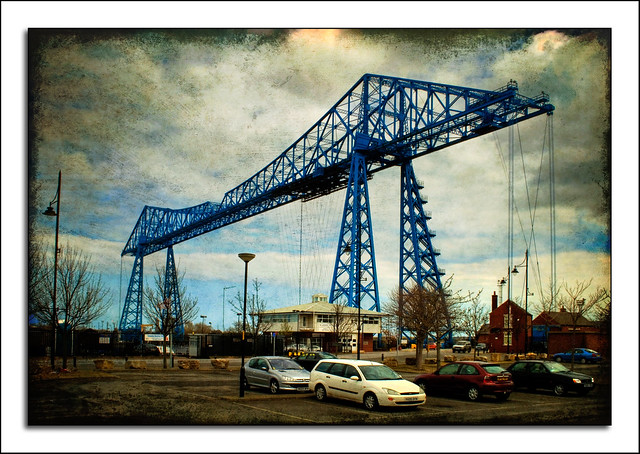
Co-Curate Page
Middlesbrough
- Overview Landmarks & Places to Visit History Timeline People "Middlesbrough is an almost unparalleled example of rapid growth...It dates from 1829, when its site was occupied by a solitary farmhouse, …
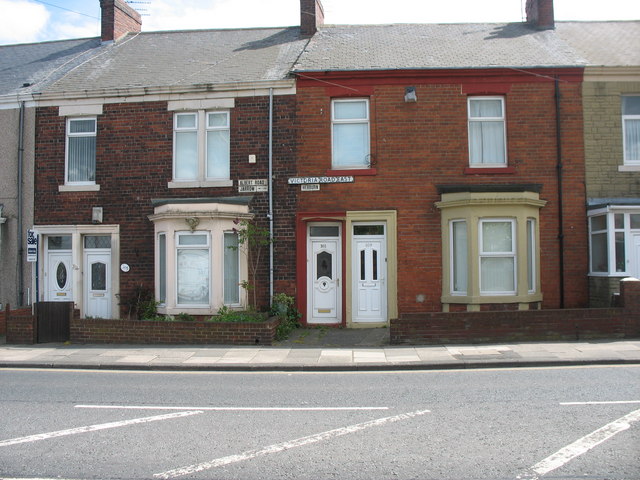
Co-Curate Page
Jarrow
- Overview About Jarrow Map Street View Jarrow is a town in north-east England, located on the River Tyne. Historically part of County Durham, in 1974 it became part of …
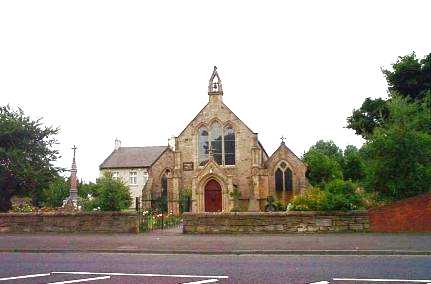
Co-Curate Page
Church of St Cuthbert RC, Cowpen
- Overview Map Street View The Roman Catholic church of St Cuthbert in Cowpen, Blyth, Nothumberland, is located off Cowpen Road (A193). The Sidney Family came to Cowpen Hall in 1804 …
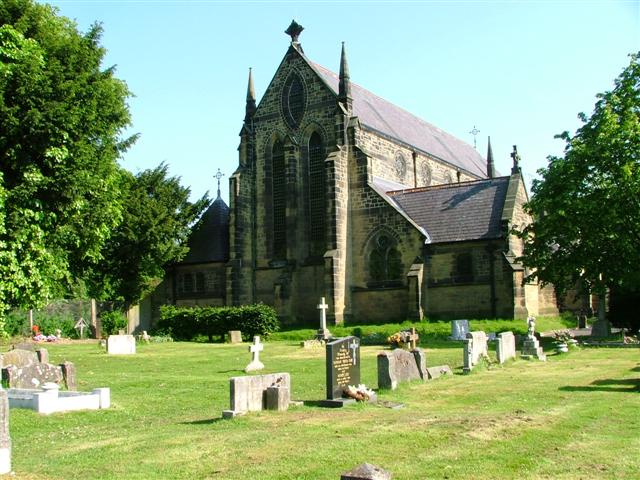
Co-Curate Page
Annitsford
- Overview About Annitsford Map Street View Annitsford is a village in North Tyneside, located just south of Cramlington in Northumberland. The name Annitsford derives from "Annet's Ford", which was a …
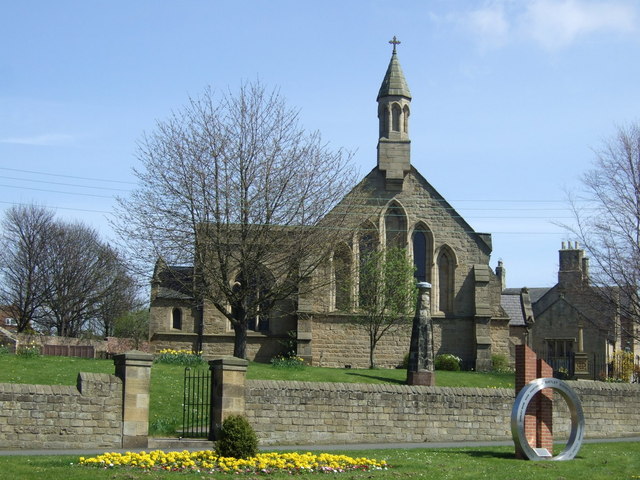
Co-Curate Page
Church of St Joseph
- Overview Map Street View St Joseph's Church in Birtley was desigened by John Dobson and was opened by 1843 to replace the Birtley Roman Catholic Mission, which had moved to …

Co-Curate Page
Church of St Mary Magdalen
- Overview Map Street View The Roman Catholic Church of St Mary Magdalen is located on Harbour Walk in Seaham. There was an influx of Irish immigrants in the 19th century, many …

from http://etheses.dur.ac.uk/1422…
From Jacobite to Radical : the Catholics of North East England, 1688-1850.
- Gooch, Leopold (1989) From Jacobite to Radical : the Catholics of North East England, 1688-1850.,
Durham theses, Durham University. Available at Durham E-Theses Online: http://etheses.dur.ac.uk/1422/. ABSTRACT: The era of the …
Added by
Simon Cotterill


from http://www.chroniclelive.co.u…
How the Irish helped build the North East - and where they set up the first ever Irish Club
- Article by Mike Kelly, Chronicle Live, 4th March 2015
Added by
Simon Cotterill

from http://etheses.dur.ac.uk/1907…
The Irish in County Durham and Newcastle c.1840-1880.
- PhD thesis by Roger Cooter. Reference: Cooter, Roger. The Irish in County Durham and Newcastle c.1840-1880. Doctoral thesis, Durham University. http://etheses.dur.ac.uk/1907/
Added by
Simon Cotterill

from http://etheses.dur.ac.uk/1710/
The Irish on Tyneside : migration and identity
- PhD thesis: Puddu, Franca (1997) The Irish on Tyneside : migration and identity. Doctoral thesis, Durham University. http://etheses.dur.ac.uk/1710/
Added by
Simon Cotterill

from http://freepages.genealogy.ro…
Irish Migration 19th Century. Newcastle and Weetslade.
- "This essay aims to look at the Irish in the Nineteenth century with reference to King (1994). and Thompson (1991) who wrote ‘There was a great deal of inter-marriage. And …
Added by
Simon Cotterill

from http://www.shieldsgazette.com…
The Irish community's impact on South Tyneside
- Shields Gazette, 29th February 2008
Added by
Simon Cotterill

from http://www.shieldsgazette.com…
Irish roots run deep in South Tyneside
- Article by Janis Blower, Shields Gazette, 16th March 2012
Added by
Simon Cotterill

from https://commons.wikimedia.org…
Emigrants Leave Ireland, by Henry Doyle, 1868
- Illustration from Preface to the First Edition of An Illustrated History of Ireland from AD 400 to 1800, by Mary Frances Cusack, Illustrated by Henry Doyle
Added by
Simon Cotterill

from https://en.wikipedia.org/wiki…
Irish diaspora
- "The Irish diaspora (Irish: Diaspóra na nGael) refers to Irish people and their descendants who live outside Ireland.
Since 1700 between 9 and 10 million people born in Ireland have …
Added by
Simon Cotterill

Co-Curate Page
Tyneside Irish Cultural Society
- "Supporting the Irish community throughout the North East" www.tynesideirishculture.co.uk ♣ www.tynesideirish.com ♣ 0191 261 0384 TICS seeks to promote Irish culture in the North East of England …

Co-Curate Page
Middlesbrough
- Overview Landmarks & Places to Visit History Timeline People "Middlesbrough is an almost unparalleled example of rapid growth...It dates from 1829, when its site was occupied by a solitary farmhouse, …

Co-Curate Page
Jarrow
- Overview About Jarrow Map Street View Jarrow is a town in north-east England, located on the River Tyne. Historically part of County Durham, in 1974 it became part of …

Co-Curate Page
Church of St Cuthbert RC, Cowpen
- Overview Map Street View The Roman Catholic church of St Cuthbert in Cowpen, Blyth, Nothumberland, is located off Cowpen Road (A193). The Sidney Family came to Cowpen Hall in 1804 …

Co-Curate Page
Annitsford
- Overview About Annitsford Map Street View Annitsford is a village in North Tyneside, located just south of Cramlington in Northumberland. The name Annitsford derives from "Annet's Ford", which was a …

Co-Curate Page
Church of St Joseph
- Overview Map Street View St Joseph's Church in Birtley was desigened by John Dobson and was opened by 1843 to replace the Birtley Roman Catholic Mission, which had moved to …

Co-Curate Page
Church of St Mary Magdalen
- Overview Map Street View The Roman Catholic Church of St Mary Magdalen is located on Harbour Walk in Seaham. There was an influx of Irish immigrants in the 19th century, many …

from http://etheses.dur.ac.uk/1422…
From Jacobite to Radical : the Catholics of North East England, 1688-1850.
- Gooch, Leopold (1989) From Jacobite to Radical : the Catholics of North East England, 1688-1850.,
Durham theses, Durham University. Available at Durham E-Theses Online: http://etheses.dur.ac.uk/1422/. ABSTRACT: The era of the …
Added by
Simon Cotterill


